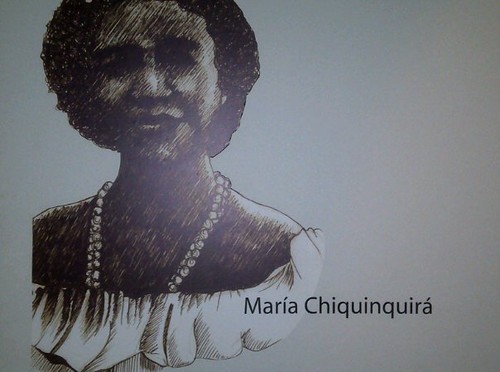Afro-Peruvian servants in Lima, early 19th century
Afro-Peruvian are descendant of Africans brought to Peru. They number 5 to 10% of the population. The population is estimated at 2 million. Large numbers can be found in the southern coast Chincha, Lima, Cañete.Nazca, Callao, and Ica, in the north Morropón Province.
History
The first Afro-Peruvians arrived with Francisco Pizzaro as slaves, sailors, and soldiers. African soldiers were with Francisco Pizzaro when he conquered the Incas in 1533. Notable slave soldier Juan Valiente was among his troops. Valiente was the only black person, slave to be awarded an
encomienda, groups of indians paying tribute.
After the conquest, Afro-Peruvians were used in construction of the now hispanised Lima and Cuzco, building roads, and clearing lands. Indians were used in the gold and silver mines. Black slaves were initially considered unfit for mining. Increasingly, Afro-Peruvian slaves began to be used in agriculture, as
haciendas began to prop up, growing cotton and later sugar, along the coast, due to indians dieing out and fleeing.
Slaves were imported from Africa and made an overland journey that took months. Many died. Slaves contributed their knowledge of farming and metalwork, which they had acquired from Africa before being captured.
Spanish law allowed slaves to purchase their freedom. At the turn of the sixteenth century, their was a substantial free population of Afro-Peruvian--
libertos. They were free but life was very regulated. They could not join the skilled trade profession. They could not own firearms. Most worked as domestics and joined the military. Plus, it was mostly women and children, particularly girls were freed, since they were considered the least valuable, between 1580-1650.
Increasingly, slaves were being used in the mines. This increased mortality causing demand for more slaves. By the 1700s, most slave owners went outside of the
asiento to purchase slaves. The
asiento was a designated provider, like the French or Dutch. By 1795, the Spanish decreed one could purchase slave from any seller--other Spanish territorries or any nation willing to sell.
In 1821, Peru vied for independence. In 1824, Antonio Jose de Sucre with a troop of predominantly
libertos, slaves, and mestizo defeated loyalists at Ayacucho, sealing Peru's independence. Independence did not bring an end to slavery, numerous revolts would occur, until Peru's civil war in 1854, in which Ramon Castilla promised an end to slavery for service. Castilla won the civil war and kept his word. Slavery ended in December of 1854.
The freeing of slaves caused a labor shortage, resulting in the importation of indentured Chinese labor. Most Afro-Peruvians fled to the cities, as well as Indians. Work was hard to come by. Afro-Peruvians found themselves residing in slums, well into the twentieth century and facing much discrimination.
 only jamaicans aint latinos imo
only jamaicans aint latinos imo cuz its technically on point lol
cuz its technically on point lol "me no black,papi!!"
"me no black,papi!!"


 Props to the Op
Props to the Op






